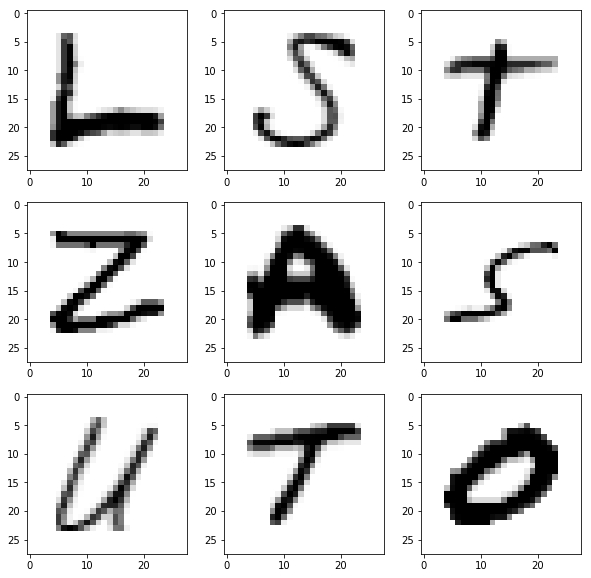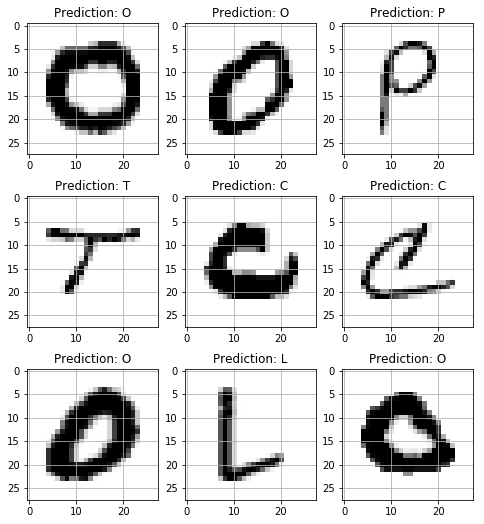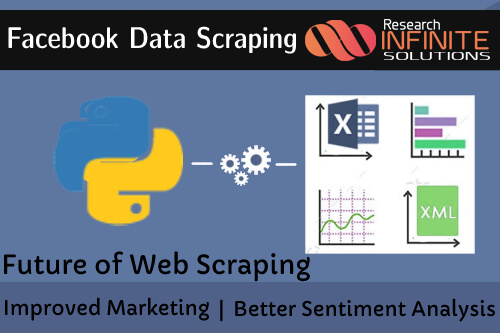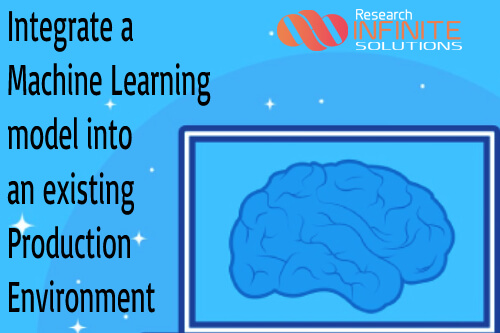Most Viewed Articles
- Blogs >
Handwritten Character Recognition with Python
Handwritten Character Recognition with Python
Handwritten Character
Recognition with Python allows the computer to turn handwriting into a readable format.
It is a field of research in Artificial Intelligence, Computer
Vision and Pattern Recognition and is used to recognize text inside images, such as scanned
documents and photos.
In this Machine Learning project, we will recognize
handwritten characters i.e
English alphabets from A-Z. We are going to achieve this by modeling a neural network
that is trained over a dataset containing images of alphabets.
Steps to implement the Handwritten Character Recognition:
- Import the libraries and load the dataset.
- Preprocess data
- Create and Train the model
- Evaluate the model
- Create GUI to predict characters
First we import all necessary libraries :
from keras.datasets import mnist import matplotlib.pyplot as plt import cv2 import numpy as np from keras.models import Sequential from keras.layers import Dense, Flatten, Conv2D, MaxPool2D, Dropout from keras.optimizers import SGD, Adam from keras.callbacks import ReduceLROnPlateau, EarlyStopping from keras.utils import to_categorical import pandas as pd import numpy as np from sklearn.model_selection import train_test_split from keras.utils import np_utils import matplotlib.pyplot as plt from tqdm import tqdm_notebook from sklearn.utils import shuffle
Using TensorFlow backend.
/home/webtunix/.local/lib/python3.5/site-packages/tensorflow/python/framework/dtypes.py:493: FutureWarning: Passing (type, 1) or '1type' as a synonym of type is deprecated; in a future version of numpy, it will be understood as (type, (1,)) / '(1,)type'.
_np_qint8 = np.dtype([("qint8", np.int8, 1)])
/home/webtunix/.local/lib/python3.5/site-packages/tensorflow/python/framework/dtypes.py:494: FutureWarning: Passing (type, 1) or '1type' as a synonym of type is deprecated; in a future version of numpy, it will be understood as (type, (1,)) / '(1,)type'.
_np_quint8 = np.dtype([("quint8", np.uint8, 1)])
/home/webtunix/.local/lib/python3.5/site-packages/tensorflow/python/framework/dtypes.py:495: FutureWarning: Passing (type, 1) or '1type' as a synonym of type is deprecated; in a future version of numpy, it will be understood as (type, (1,)) / '(1,)type'.
_np_qint16 = np.dtype([("qint16", np.int16, 1)])
/home/webtunix/.local/lib/python3.5/site-packages/tensorflow/python/framework/dtypes.py:496: FutureWarning: Passing (type, 1) or '1type' as a synonym of type is deprecated; in a future version of numpy, it will be understood as (type, (1,)) / '(1,)type'.
_np_quint16 = np.dtype([("quint16", np.uint16, 1)])
/home/webtunix/.local/lib/python3.5/site-packages/tensorflow/python/framework/dtypes.py:497: FutureWarning: Passing (type, 1) or '1type' as a synonym of type is deprecated; in a future version of numpy, it will be understood as (type, (1,)) / '(1,)type'.
_np_qint32 = np.dtype([("qint32", np.int32, 1)])
/home/webtunix/.local/lib/python3.5/site-packages/tensorflow/python/framework/dtypes.py:502: FutureWarning: Passing (type, 1) or '1type' as a synonym of type is deprecated; in a future version of numpy, it will be understood as (type, (1,)) / '(1,)type'.
np_resource = np.dtype([("resource", np.ubyte, 1)])
Read the data...
data = pd.read_csv('A_Z Handwritten Data.csv').astype('float32')
Handwritten Character Recognition with Python
Split data X-Our data and y-Predicted label
X = data.drop('0',axis = 1) y = data['0']
Reshaping the data in csv file so that it can be displayed as an image...
train_x, test_x, train_y, test_y = train_test_split(X, y, test_size = 0.2) train_x = np.reshape(train_x.values, (train_x.shape[0], 28,28)) test_x = np.reshape(test_x.values, (test_x.shape[0], 28,28)) print("Train data shape: ", train_x.shape) print("Test data shape: ", test_x.shape)
Train data shape: (297960, 28, 28) Test data shape: (74490, 28, 28)
Dictionary for getting characters from index values...
word_dict = {0:'A',1:'B',2:'C',3:'D',4:'E',5:'F',6:'G',7:'H',8:'I',9:'J',10:'K',11:'L',12:'M',13:'N',14:'O',15:'P',16:'Q',17:'R',18:'S',19:'T',20:'U',21:'V',22:'W',23:'X', 24:'Y',25:'Z'}
Plotting the number of alphabets in the dataset...
train_yint = np.int0(y) count = np.zeros(26, dtype='int') for i in train_yint: count[i] +=1 alphabets = [] for i in word_dict.values(): alphabets.append(i) fig, ax = plt.subplots(1,1, figsize=(10,10)) ax.barh(alphabets, count) plt.xlabel("Number of elements ") plt.ylabel("Alphabets") plt.grid() plt.show()

Shuffling the data ...
shuff = shuffle(train_x[:100]) fig, ax = plt.subplots(3,3, figsize = (10,10)) axes = ax.flatten() for i in range(9): axes[i].imshow(np.reshape(shuff[i], (28,28)), cmap="Greys") plt.show()

Reshaping the training & test dataset so that it can be put in the model...
train_X = train_x.reshape(train_x.shape[0],train_x.shape[1],train_x.shape[2],1) print("New shape of train data: ", train_X.shape) test_X = test_x.reshape(test_x.shape[0], test_x.shape[1], test_x.shape[2],1) print("New shape of train data: ", test_X.shape)
New shape of train data: (297960, 28, 28, 1) New shape of train data: (74490, 28, 28, 1)
Converting the labels to categorical values...
train_yOHE = to_categorical(train_y, num_classes = 26, dtype='int') print("New shape of train labels: ", train_yOHE.shape) test_yOHE = to_categorical(test_y, num_classes = 26, dtype='int') print("New shape of test labels: ", test_yOHE.shape)
New shape of train labels: (297960, 26) New shape of test labels: (74490, 26)
CNN model..
model = Sequential() model.add(Conv2D(filters=32, kernel_size=(3, 3), activation='relu', input_shape=(28,28,1))) model.add(MaxPool2D(pool_size=(2, 2), strides=2)) model.add(Conv2D(filters=64, kernel_size=(3, 3), activation='relu', padding = 'same')) model.add(MaxPool2D(pool_size=(2, 2), strides=2)) model.add(Conv2D(filters=128, kernel_size=(3, 3), activation='relu', padding = 'valid')) model.add(MaxPool2D(pool_size=(2, 2), strides=2)) model.add(Flatten()) model.add(Dense(64,activation ="relu")) model.add(Dense(128,activation ="relu")) model.add(Dense(26,activation ="softmax")) model.compile(optimizer = Adam(), loss='categorical_crossentropy', metrics=['accuracy']) reduce_lr = ReduceLROnPlateau(monitor='val_loss', factor=0.2, patience=1, min_lr=0.0001) early_stop = EarlyStopping(monitor='val_loss', min_delta=0, patience=2, verbose=0, mode='auto') history = model.fit(train_X, train_yOHE, epochs=1, callbacks=[reduce_lr, early_stop], validation_data = (test_X,test_yOHE)) model.summary() model.save(r'model_hand.h5')
Train on 297960 samples, validate on 74490 samples Epoch 1/1 297960/297960 [==============================] - 430s 1ms/step - loss: 1.1870 - acc: 0.8983 - val_loss: 0.0836 - val_acc: 0.9761 _________________________________________________________________ Layer (type) Output Shape Param # ================================================================= conv2d_4 (Conv2D) (None, 26, 26, 32) 320 _________________________________________________________________ max_pooling2d_4 (MaxPooling2 (None, 13, 13, 32) 0 _________________________________________________________________ conv2d_5 (Conv2D) (None, 13, 13, 64) 18496 _________________________________________________________________ max_pooling2d_5 (MaxPooling2 (None, 6, 6, 64) 0 _________________________________________________________________ conv2d_6 (Conv2D) (None, 4, 4, 128) 73856 _________________________________________________________________ max_pooling2d_6 (MaxPooling2 (None, 2, 2, 128) 0 _________________________________________________________________ flatten_2 (Flatten) (None, 512) 0 _________________________________________________________________ dense_4 (Dense) (None, 64) 32832 _________________________________________________________________ dense_5 (Dense) (None, 128) 8320 _________________________________________________________________ dense_6 (Dense) (None, 26) 3354 ================================================================= Total params: 137,178 Trainable params: 137,178 Non-trainable params: 0 _________________________________________________________________
Displaying the accuracies & losses for train & validation set...
print("The validation accuracy is :", history.history['val_acc']) print("The training accuracy is :", history.history['acc']) print("The validation loss is :", history.history['val_loss']) print("The training loss is :", history.history['loss'])
The validation accuracy is : [0.9760907504363002] The training accuracy is : [0.8983185662505034] The validation loss is : [0.08358431425431195] The training loss is : [1.1870133685692619]
Making model predictions...
pred = model.predict(test_X[:9]) print(test_X.shape)
(74490, 28, 28, 1)
Displaying some of the test images & their predicted labels...
fig, axes = plt.subplots(3,3, figsize=(8,9)) axes = axes.flatten() for i,ax in enumerate(axes): img = np.reshape(test_X[i], (28,28)) ax.imshow(img, cmap="Greys") pred = word_dict[np.argmax(test_yOHE[i])] ax.set_title("Prediction: "+pred) ax.grid()

Popular Searches
- Thesis Services
- Thesis Writers Near me
- Ph.D Thesis Help
- M.Tech Thesis Help
- Thesis Assistance Online
- Thesis Help Chandigarh
- Thesis Writing Services
- Thesis Service Online
- Thesis Topics in Computer Science
- Online Thesis Writing Services
- Ph.D Research Topics in AI
- Thesis Guidance and Counselling
- Research Paper Writing Services
- Thesis Topics in Computer Science
- Brain Tumor Detection
- Brain Tumor Detection in Matlab
- Markov Chain
- Object Detection
- Employee Attrition Prediction
- Handwritten Character Recognition
- Gradient Descent with Nesterov Momentum
- Gender Age Detection with OpenCV
- Realtime Eye Blink Detection
- Pencil Sketch of a Photo
- Realtime Facial Expression Recognition
- Time Series Forecasting
- Face Comparison
- Credit Card Fraud Detection
- House Price Prediction
- House Budget Prediction
- Stock Prediction
- Email Spam Detection








